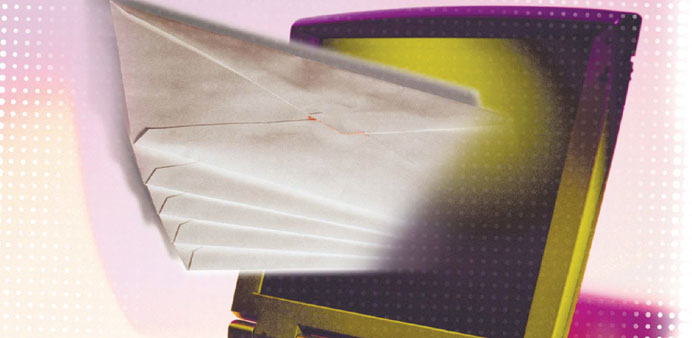By Mary Mitchell/Reuters
Like it or not, we all are responsible for our own communication. E-mail evokes almost unprecedented cultural and generational challenges.
Why, you ask? Because the primary caveat in communicating effectively is that what you “hear” is more important than what I think I’ve said.
Mallory Fix, who teaches English as a second language at the University of Pennsylvania, says: “E-mail etiquette does vary across the globe, especially in ways to address the receiver, the directness of the message, and the closing.”
Here are the concerns this columnist hears most often:
Always use a salutation and a closing. Based on your relationship, only you can decide whether deference dictates a “Dear Professor” or “Good morning, Dr Weber”.
One colleague of mine received an e-mail greeting from a student of “Hey, Lou,” and then proceeded to ask him for a reference. Bad idea!
For your career’s sake, make sure you get the name and title right. In the situation above, the man was a full professor, entitled to more than a modicum of respect. Furthermore, his first name was Dennis!
Avoid trendy abbreviations and be careful of emoticons. They may be misunderstood and thus not clearly convey your meaning.
Don’t confuse e-mail with texting or IM (instant messaging). E-mail is more formal than that. Use complete sentences, correct grammar, correct punctuation, and capitalisation. Yet subject lines should be as efficient as a tweet, concisely stating what’s important and relevant.
Make sure your subject lines distinguish you from a hacker or a scammer by being current and germane. For example, “Change in Tuesday lunch meeting”.
If a subject changes, change the header! Remember that e-mail is no place for stream of consciousness ruminations, so be direct, clear, and succinct. Respond in full sentences.
When you have a long list of comments, put them in a single Word document attachment, or number the points so that the recipient knows you got everything. When there is a succession of e-mails, indicate “1 of 4”, for example.
No time to respond fully to a long e-mail? Reply to the sender that you received the e-mail and indicate when you will be responding. Nothing is more discouraging than feeling ignored.
Just because something can be forwarded doesn’t mean it should be. Remember, too, that a recipient can forward your e-mail, and you have no control at that point.
Patience is a virtue. Not every e-mail gets delivered. This happens more frequently than we would like to admit. Offer people the same grace that you would like to receive on e-mail responses.
Pick up the phone if you don’t hear back after a couple of tries. It’s not fair to assume that, for example, your e-mail must be treated as top of the list, especially dealing with attorneys and physicians.
Sometimes postal mail and faxes arrive at an office before your e-mail. Unless it’s an emergency, responses should be taken in order.
Remember that the person reading your e-mail has only the words on the screen. Now think about how much our tone of voice impacts our message, so beware of sarcasm. Consider, for example, how many ways we can interpret even the simple word, “please.”
For me, the “E” in e-mail represents two essential reminders. First: edit, edit, edit to be sure all your facts, grammar and punctuation are correct. Second: e-mail is eternal. Just ask Hillary Clinton.
♦ Mary M Mitchell has written several books on the subject of etiquette, now in 11 languages, most recently The Complete Idiot’s Guide to Modern Manners Fast Track and Woofs to the Wise. She is the founder of executive training consultancy The Mitchell Organisation (www.themitchellorganization.com).

